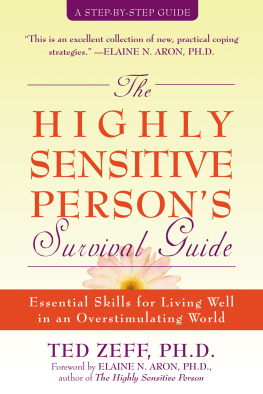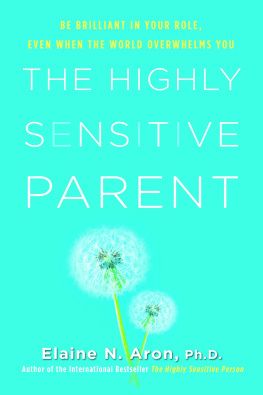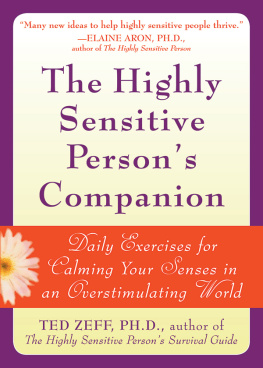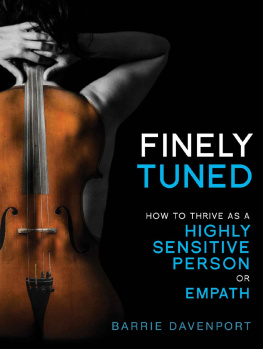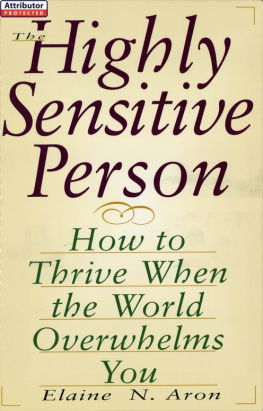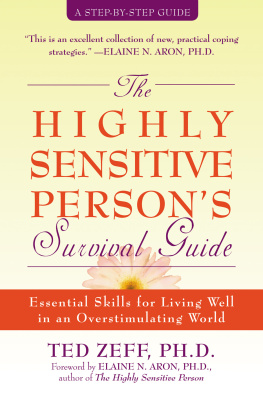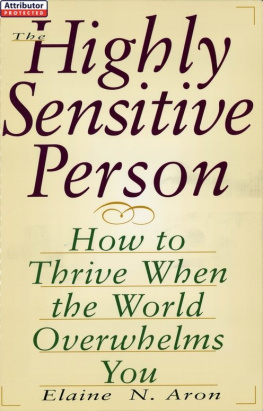References
Amritaswarupananda, Swami. 1989. Awaken Children: Dialogues with Ammachi, Volume I. Kerala, India: M.A. Mission Trust.
. 1994. Ammachi: A Biography. San Ramon, CA: M.A. Center.
Aron, Elaine. 1996. The Highly Sensitive Person. New York: Carol Publishing.
. 1999. The Highly Sensitive Persons Workbook. NewYork: Broadway Books.
. 2001. The Highly Sensitive Person in Love. New York: Broadway Books.
. 2002. The Highly Sensitive Child. New York: Broadway Books.
Barks, Coleman and John Moyne. 1999. Open Secret. Aptos, CA: Threshold.
Becker, Marty. 2002. The Healing Power of Pets. New York: Hyperion.
Bhat, Naras. 1995. How to Reverse and Prevent Heart Disease and Cancer. Burlingame, CA: Kumar Pati.
Carper, Jean. 1995. Stop Aging Now. New York: Harper Collins.
Chopra, Deepak. 2001. Grow Younger, Live Longer. New York: Three Rivers Press.
. 1991. Perfect Health. New York: Three Rivers.
. 1994. Restful Sleep. New York: Three Rivers Press.
Cook, Kathy. 2001. Ryans well. Canadian Readers Digest January 2001.
Cousins, Norman. 1983. The Healing Heart. New York: Norton.
Dalai Lama and Howard Cutler. 2003. The Art of Happiness. New York: Riverhead Books.
DeGrandpre, Richard. 1999. Ritalin Nation. New York: W W Norton.
Federal Drug Administration. 2003. Report on mercury measurements in 39 seafood varieties.
Field, Tiffany. 2000. Touch Therapy. New York: Harcourt Brace.
Frawley, David. 1989. Ayurvedic Healing. Salt Lake City, UT: Morson.
Friedman, Meyer and Ray Rosenman. 1974. Type A Behavior and Your Heart. NewYork: Fawcett Columbine.
Glass, D. C. and M. L. Snyder. 1974. Time urgency and the Type A behavior pattern. Journal of Applied Psychology 4:125.
Goldberg, Burton. 1993. Alternative Medicine: The Definitive Guide. Tiburon, CA: Future Medicine.
Hanh, Thich Nhat. 1991. Peace Is Every Step. New York: Bantam.
Hay, Louise. 1987. You Can Heal Your Life. Santa Monica, CA: Hay House.
Jacobs, Gregg. 1998. Say Goodnight to Insomnia. New York: Henry Holt.
Jaeger, Barrie. 2004. Making Work Work for Highly Sensitive People. New York: McGraw-Hill.
Katie, Byron. 2002. Loving What Is. New York: Harmony Books.
Kindlon, Dan and Michael Thompson. 1999. Raising Cain. New York: Ballantine.
Kivel, Paul. 1992. Mens Work. Center City, MN: Hayeldon.
Lad, Vasant. 1984. Ayurveda: The Science of Self-Healing. Wilmot, WI: Lotus Light.
Murray, Elizabeth. 1997. Cultivating Sacred Space. Novato, CA: Pomegranate Press.
Myss, Caroline. 1996. Anatomy of the Spirit. New York: Three Rivers Press.
Peace Pilgrim Friends. 1982. Peace Pilgrim: Her Life and Work in Her Own Words. Santa Fe, NM: Ocean Tree Books
Pelletier, Kenneth. 1977. Mind as Healer, Mind as Slayer. New York: Delacorte.
Pollack, William. 1998. Real Boys. New York: Random House.
Ramakrishna Swami. 2003. Racing Along the Razors Edge. San Ramon, CA: M.A. Center.
Rosch, Paul. 2003. Report on stress. American Institute of Stress. Yonkers, NY.
Rosenfeld, Barry. Having a sense of spiritual well-being. The Lancet Journal May, 2003
Roskies, Ethel. Effectiveness of an intervention program for coronary-prone managers. Journal of Behavioral Medicine June, 1979.
Sullivan, Nancy. 1978. Treasury of American Poetry. Garden City, NY: Doubleday
Tolle, Eckhart. 1999. The Power of Now. Novato, CA: New World Library.
U.S. Department of Labor. 2004. O*NET Dictionary of Occupational Titles. Indianapolis, IN: Jist Works.
Wallace, Keith. 1970. The effectiveness of the transcendental meditation program. Science Magazine 167:17511754.
Weil, Andrew. 1990. Natural Health Natural Medicine. Boston: Houghton-Miffler.
. 1995. Spontaneous Healing. New York: Knopf.
Whitaker, Julian. 2001. Reversing Diabetes. New York: Warner Books.
. 2004. Serious problems reported with supplements. Medical Alerts 14:7.
Worwood, V. 1997. The Fragrant Mind. London: Bantam Books.
Zeff, Ted. 1981. The Psychological and Physiological Effects of Meditation and the Physical Isolation Tank on the Type A Behavior Pattern. Ann Arbor, MI: University Microfilms.
. 1997. Searching For God. San Ramon, CA: Shiva Publishing.
. 1999. Healing Insomnia Home Study Guide. San Ramon, CA: Zeff Publishing.
. 2002. Searching For God, Part II. San Ramon, CA: Shiva Publishing.
If youre highly sensitive, youve picked up the right book. Zeffs easy-to-follow advice will transform your life. An illuminating book on a critically important topic.
Linda Johnsen, MS, author of The Complete Idiots Guide to Hinduism and Alpha Teach Yourself Yoga in Twenty-Four Hours
This book is a must read for every highly sensitive person. Zeff has many innovative techniques for coping with the overstimulation and stress in our fast-paced world.
Sanford L. Severin, MD, author of TriEnergetics

Publishers Note
This publication is designed to provide accurate and authoritative information in regard to the subject matter covered. It is sold with the understanding that the publisher is not engaged in rendering psychological, financial, legal, or other professional services. If expert assistance or counseling is needed, the services of a competent professional should be sought.
Are You Highly Sensitive? A Self-Test on page 4 is from THE HIGHLY SENSITIVE PERSON by Elaine Aron. Copyright 1996 by Elaine N. Aron. A Citadel Press Book. All rights reserved. Reprinted by arrangement with Kensington Publishing Corp. www.kensingtonbooks.com
Distributed in Canada by Raincoast Books.
Copyright 2004 by Ted Zeff
New Harbinger Publications, Inc.
5674 Shattuck Avenue
Oakland, CA 94609
Cover design by Amy Shoup
Edited by Carole Honeychurch
Acquired by Spencer Smith
Text design by Michele Waters-Kermes
epub ISBN: 9781608828487
All Rights Reserved
New Harbinger Publications Web site address: www.newharbinger.com
Contents
Foreword
I am happy to introduce this book to highly sensitive people (HSPs) and their loved ones. For those of you new to the concept, Ted Zeff does a fine job of making you acquainted with who HSPs are and how they operate in the world. In particular, his caring and respect comes through on every page.
Between these covers Ted Zeff shares many thoughtful insights, fine accounts of solutions to problems found by HSPs, and an excellent collection of fresh, practical suggestions for supporting the highly sensitive body and spirit. But most importantly, he models a caring, respectful attitude towards HSPs everywhere. We are fortunate to have his attention.
For those of you familiar with my work, you will find that Ted and I approach many things differently, but that may be very refreshing. It is important that we understand that although our nervous systems are similar in an essential way, we can approach problems and think about things very differently. The more sound perspectives that are available, the better, and Teds perspective is a good one.

